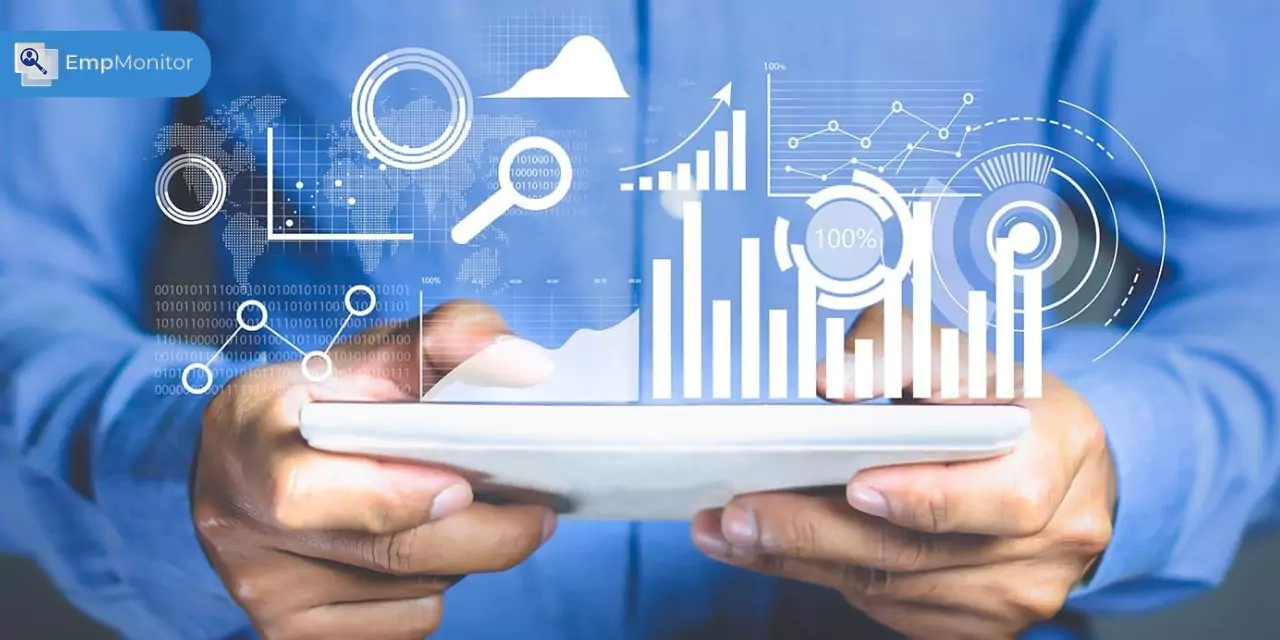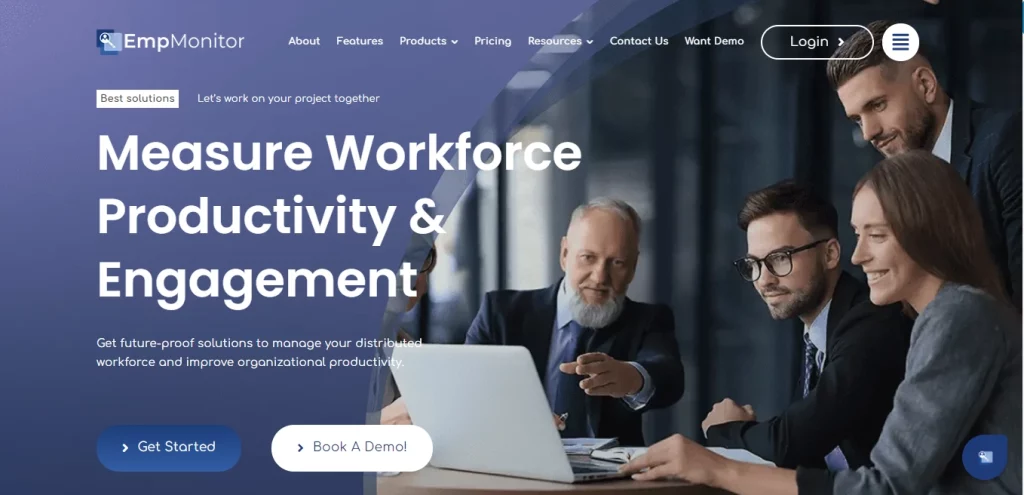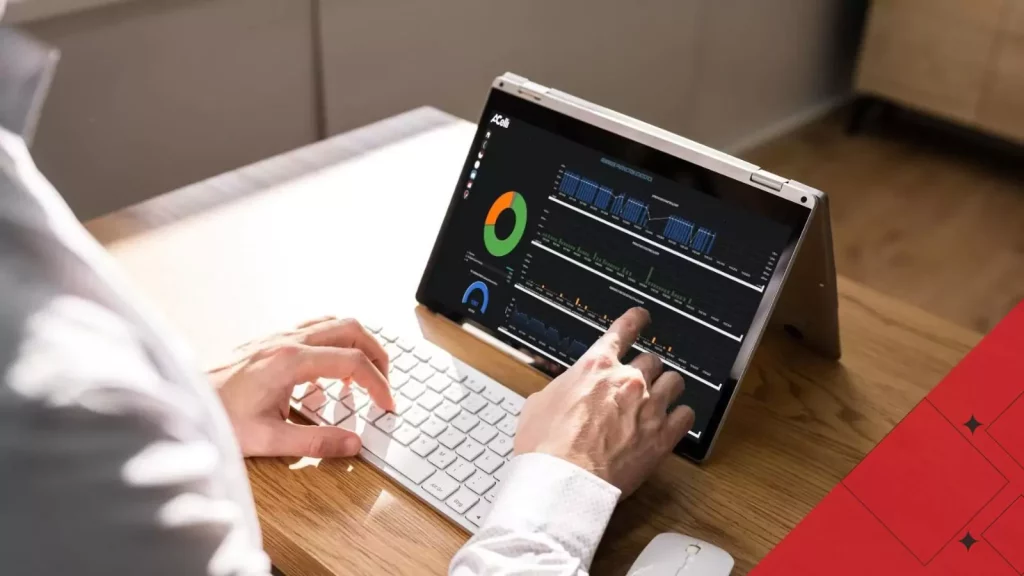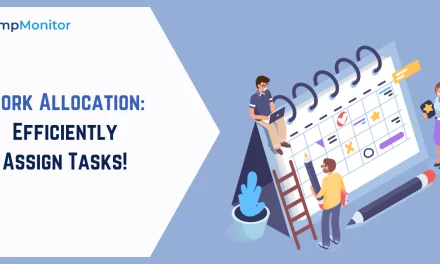Real-time monitoring has emerged as a pivotal tool for businesses and individuals alike, offering a window into operations, processes, and activities as they unfold. From tracking website traffic to monitoring industrial processes, the applications of real-time monitoring are vast and transformative.
Businesses rely on it to optimize operations and respond swiftly to changes. Researchers use it to understand complex systems and phenomena as they unfold. Individuals benefit from real-time monitoring by staying informed about their environment and well-being.
Harnessing real-time monitoring is not just about knowing what’s happening; it’s about staying ahead of the curve, seizing opportunities, and mitigating risks at the moment. In a world where every second counts, monitoring empowers to keep pace with the now and shape a more responsive and efficient future.
Join us as we embark on a journey through the realm of real-time monitoring, where data flows ceaselessly and knowledge is gained- at the moment.
LISTEN TO THE PODCAST NOW!
Real-Time Monitoring
Real-time monitoring refers to the continuous and immediate observation, analysis, and reporting of data as events occur. It involves tracking various parameters, activities, or processes in real time, allowing for quick response and decision-making based on up-to-date information.
It typically involves using sensors, software, and communication networks to collect and transmit- data in real time. This data can come from various sources, such as environmental sensors, industrial equipment, network traffic, financial transactions, or even social media feeds- depending on the context.
How Does Real-Time Monitoring Work?
It works by constantly checking transactions for signs of potential fraud, often using advanced technology like machine learning. Here’s how it typically works:
- Collecting Data: Information from transactions, user profiles, device details, and location data- is gathered to build a picture of normal customer behavior.
- Ingesting Data: This collected data is then organized and prepared for analysis, ensuring it’s in a format that the monitoring system can understand.
- Spotting Patterns and Analyzing: The system establishes what’s normal and compares incoming data to it. It uses smart algorithms to detect any unusual activity, like transactions that don’t fit typical patterns or behavior that seems suspicious.
- Generating Alerts: If something seems off, the system raises an alert- for further investigation. Sometimes, it might even take- action automatically if it’s programmed to do so.
- Keeping Records and Reporting: Every fraud attempt and the actions taken to stop it are documented. Reports are created to help understand what’s happening and improve fraud prevention strategies.
- Continuous Improvement: Organizations learn from each incident, adjusting their monitoring systems to become even better at catching fraud while reducing false alarms. It’s a constantly evolving process to stay ahead of fraudsters.
Also Read: What Are The Secrets To Effective Live Monitoring?
How To Use Real Time Network Monitoring For Efficiency?
How Can Companies Implement Real-time Monitoring?
It enables real-time analytics, which helps businesses quickly fix issues and make effective decisions.
1. Define monitoring goals.
Companies should determine their objectives for implementing effective monitoring of user activity. It involves selecting the key metrics, performance indicators, and activities that need to be monitored. Key metrics can include application change time and deployment frequency.
Companies should also assess their infrastructure and systems to identify the components that need monitoring, such as servers, network devices, applications, and databases. Different components require different types of monitoring, such as network performance monitoring, application monitoring, and security monitoring.
2. Choose the right tools.
Selecting the right monitoring tools is crucial for success. Companies should evaluate the options based on factors- such as scalability, flexibility, ease of use, and compatibility with their existing infrastructure. Successful real-time monitoring tools support data collection, offer customizable monitoring dashboards and alerts, and provide analytic capabilities.
One tool that’s worth considering is EmpMonitor. It can help you- keep an eye on what’s happening in real time and has features like customizable alerts and dashboards.
EmpMonitor: Workforce Management Software
EmpMonitor is a cutting-edge real-time monitoring software designed to provide businesses with a comprehensive solution for keeping track of their digital activities. Whether you’re managing a small team or overseeing a large workforce, EmpMonitor offers powerful features to ensure efficiency, productivity, and security.
Employee Monitoring Software: Enhancing team performance and boosting productivity are critical elements for a successful team. Employee Monitoring Software allows organizations to effectively track their distributed workforce, leading the way to greater team success.
This software provides an in-depth analysis of team activities, offering insights into daily and hourly operations. With its context-rich reporting, organizations can efficiently monitor and enhance team productivity, ensuring optimal performance levels are maintained.
Time-Tracking: Empmonitor’s time-tracking feature offers detailed insights into employee work patterns, allowing businesses to effortlessly identify trends and top performers through automated reports. With meticulous time monitoring, accountability is ensured, facilitating optimal performance assessment. Analysis of productive and idle work hours helps in resource optimization, while accurate time-sheet reports provide a comprehensive overview of employee activity, enhancing productivity and efficiency.
Insider Threat Prevention: EmpMonitor enables organizations to monitor employee usage of company assets, including attempted activities on compromised or restricted platforms. It helps in identifying threatening behavior from employees with either negligent or malicious intent that might have been- overlooked by standard KYE procedures.
By enhancing security measures, EmpMonitor effectively prevents insider threats. It identifies potentially harmful activities in real time, ensuring timely intervention to mitigate risks associated with employee behavior. This comprehensive solution strengthens the organization’s defense against negligent and malicious intent, safeguarding critical assets and sensitive information.
Workforce Productivity & Engagement: Within Empmonitor’s suite of features lies an expansive array of tools designed to offer comprehensive support for all aspects of- workforce operations. Users are equipped- with a next-generation enterprise intelligence system encompassing HR operations, project management, and time-tracking capabilities. It empowers employees with the resources they need to enhance productivity and foster maximum engagement. With administrative convenience at the forefront, Empmonitor- project time tracking software enables organizations to optimize their workforce management strategies seamlessly.
EmpMonitor empowers businesses to take control of their digital environment, enhance productivity, and safeguard their assets. EmpMonitor is the ideal solution for businesses looking to gain real-time visibility into their operations and protect against potential threats.
3. Set up monitoring infrastructure.
Once the tools have been selected, companies should deploy monitoring agents or sensors across their network, servers, and applications to collect data. It involves establishing secure connections between monitoring tools and devices- being monitored and might include the deployment of monitoring agents, sensors, probes, centralized monitoring servers, and cloud-based monitoring platforms.
4. Define key metrics.
Companies should define the metrics that are critical for monitoring the performance, security, and health of their managed systems. These metrics may include bandwidth use, latency, error states, server response time, CPU use, and network traffic volume. Thresholds should- also be established to trigger alerts when abnormal or critical conditions are detected.
5. Configure alerts.
Companies should configure alerts and notifications based on defined thresholds and priorities. It involves determining which relevant stakeholders should receive the alerts and establishing clear escalation procedures for addressing critical issues. Alerts should be actionable, concise, and prompt, and they should- provide enough real-time information to facilitate timely response and resolution. Alerts should be automated to reduce manual intervention.
6. Integrate monitoring with other systems.
To maximize a real-time monitoring system’s effectiveness, it must be integrated- with existing incident management systems, ticketing systems, diagnostics, and IT service management platforms. It can increase incident response processes. Application programming interfaces- should also be used to exchange data among different systems and enable seamless information sharing.
7. Perform data visualization.
Dashboards and reporting systems should be set up to display monitoring data in a meaningful and easily understood format. Charts, graphs, and other visual tools can help identify trends, patterns, and anomalies.
8. Define response procedures.
Well-defined response procedures and escalation paths- must be developed to address issues detected through real-time employee tracking. Responsibilities should be assigned, and protocols established for timely resolution and communication during critical events. These protocols and responsibilities must be secured to prevent escalation attacks.
9. Regularly review and optimize.
Companies should continuously monitor the effectiveness and efficiency of real-time monitoring, regularly reviewing monitoring parameters, alerting thresholds, and response procedures to ensure they align with the changing needs. It requires training staff so they have the skills to interpret the data, make adjustments, and incorporate feedback from users to refine the monitoring process.
ALSO READ
Create A Bias-Free Workplace With Real Time Employee Tracking
How To Implement Effective Monitoring User Activities
Simplify Project Management With Time Tracking Software
What Are The Benefits Of Real-Time Monitoring?
Although it is a good business practice to monitor your network in real time, doing so also provides several advantages for small business owners.
- Enhanced Network Security: It acts like a vigilant guard for your system, keeping an eye out for any potential threats or suspicious activities. Unlike traditional methods that only check periodically, real-time monitoring continuously looks at network traffic and system events. It means it can quickly spot and track computer activity, helping to prevent security incidents before they happen. It also uses advanced algorithms to detect subtle signs of malicious activity, like unusual spikes in traffic or unauthorized login attempts.
- Improved Network Performance: It provides a constant check on your network’s health, looking at things like resource usage and traffic patterns. It helps to identify and fix performance issues before they become bigger problems. By pinpointing bottlenecks and redistributing resources- you can ensure smooth performance and optimize configurations for better service quality. Real-time reports also provide valuable data for making informed decisions, preventing unnecessary changes that could cause more issues.
- Boosted Employee Productivity: With real-time tracking in place, your employees can work without interruptions caused by technical problems. By quickly addressing network issues, they can stay focused on their tasks and collaborate more effectively. Shared views of progress and resource availability help teams communicate better, avoiding misunderstandings that could impact projects.
- Cost Savings: It helps to prevent costly downtime by identifying and addressing network issues before they escalate. By optimizing processes and eliminating redundancies, it saves time and effort for employees, leading to improved productivity and faster project completion. It ultimately translates to cost savings and better overall efficiency for your business.
Wrapping Up
Real-time monitoring is changing the way we see and interact with the world around us. Providing instant access to data and insights- allows us to make informed decisions and take timely action. Whether it’s monitoring our health, tracking environmental changes, or managing industrial processes, real-time monitoring has countless applications that can improve efficiency, safety, and quality of life.
One such tool is EmpMonitor, which can- analyze and report on employee productivity in real-time. It offers businesses unprecedented insights into their workforce dynamics.












